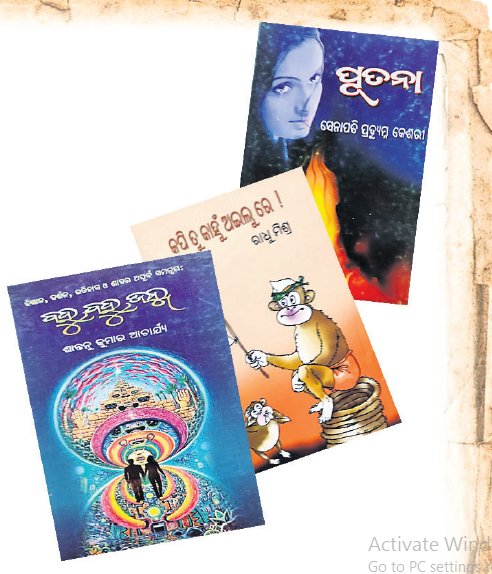The late 20th century marked a significant period in Odia literature as numerous books redefined the literary landscape. From poetry to plays, these works have left an indelible mark on the Odia literary canon. This listicle explores some of the most influential Odia literary works published between 1987 and 1997, highlighting their contributions to the language and literature.
‘Omkar Dhwani’ (1987) by Ramachandra Behera
Published by Friends publishers from Cuttack, ‘Omkar Dhwani’ is a collection that stands out for its innovative use of language and thematic depth. The book was awarded the prestigious ‘Sarala Puraskar’ in 1991, recognising its contribution to Odia literature.
‘Dhaana Saunta Jhia’ (1987) by Hrushikesh Mallick
Hrushikesh Mallick’s ‘Dhaana Saunta Jhia’ marked a significant shift in Odia poetry that profoundly redefined the portrayal of rural characters, particularly focusing on a girl from a marginalised community. This shift heralded a new era in Odia poetry, broadening its thematic scope and emotional depth.
Esteemed critic and literary historian Ramesh Panigrahi said, “With Mallick’s poems Odia poetry takes an immediate turn from urbanisation to ruralisation, from culture to nature, from the cooked to the raw.”
‘Patadei’ (1987) by Binapani Mohanty
Published by Vidyapuri, Cuttack, ‘Patadei’ is arguably the most celebrated work of Binapani Mohanty’s literary career. The book received the ‘Kendra Sahitya Akademi Award’ in 1990 and became a defining piece in Mohanty’s outputs, establishing her as a prominent voice in Odia literature.
‘Ho Bhagate’ (1987) by Subodh Patnaik
Published by Panchamukhi Publications, Cuttack, ‘Ho Bhagate’ is a unique play that explores spiritual consciousness through a distinctive lens. The play is noted for its introspective approach and originality in both conceptualisation and presentation.
‘Akash Jeunthi Katha Kahe’ (1990) by Susmita Bagchi
In ‘Akash Jeunthi Katha Kahe’, Susmita Bagchi delves into the comparison of urban modernity and nature. Her narrative style reflects a continuous evolution, positioning her as a formidable force in contemporary Odia literature.
‘Athaya Surya’ (1989) by Haraprasad Parichha Patnaik
‘Athaya Surya’ features poems like “Phanas Punjira Kabita” and “Mahulabanara Geeta” that stand out in the post-1980s Odia poetry scene. The rhythm, meter, and emotional resonance of these poems mark a significant contribution to Odia literature.
‘Shabari’ (1991) by Pratibha Satpathy
Pratibha Satpathy’s ‘Shabari’, published 14 years after Naresh Mehta’s Hindi work of the same name, surpasses its predecessor in both language and thematic structure. This work has become a cornerstone in Odia poetry, with its protagonist embodying the essence of the Earth rather than just a character from the Ramayana.
‘Deshakala Patra’ (1992) by Jagannath Prasad Das
Published by Bijay Book Store, Bhubaneswar, ‘Deshakala Patra’ is a meticulous chronicle of Odisha’s cultural history from 1885 to 1907. The book has been lauded for its detailed portrayal of the era and is considered one of Das’s most significant contributions to Odia literature.
‘Ghat’ (1994) by Kanishka
Published by Pine Kulpa, Cuttack, ‘Ghat’ is a novel set against the backdrop of a rural college. It explores the moral decay and sexual deviance of the younger generation. The novel’s stark realism was later echoed in the Kendrapara sex scandal, and it has been adapted into a serial for Doordarshan.
Also Read: 1980s Odia literature: 10 books that defined the era
‘Mu, Ambhe O Ambhe mane’ (1997) by Ramesh Prasad Panigrahi
Published by Bijay Book Store, Berhampur, ‘Mu, Ambhe O Ambhemane’ is an experimental play that examines how an individual neglects his family, leading to tragic outcomes. Panigrahi, a key figure in modern Odia theatre, follows in the footsteps of Manoj Das in shaping contemporary drama.
These works represent the diversity and richness of Odia literature during a transformative period. Each author brought a unique perspective to their writing, contributing to the broader narrative of Odia culture and history. Their legacies continue to inspire and influence new generations of writers and readers alike.
PNN
